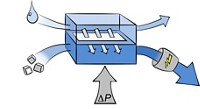Advertisement
Grab your lab coat. Let's get started
Welcome!
Welcome!
Create an account below to get 6 C&EN articles per month, receive newsletters and more - all free.
It seems this is your first time logging in online. Please enter the following information to continue.
As an ACS member you automatically get access to this site. All we need is few more details to create your reading experience.
Not you? Sign in with a different account.
Not you? Sign in with a different account.
ERROR 1
ERROR 1
ERROR 2
ERROR 2
ERROR 2
ERROR 2
ERROR 2
Password and Confirm password must match.
If you have an ACS member number, please enter it here so we can link this account to your membership. (optional)
ERROR 2
ACS values your privacy. By submitting your information, you are gaining access to C&EN and subscribing to our weekly newsletter. We use the information you provide to make your reading experience better, and we will never sell your data to third party members.
Environment
ACS Meeting News: Device could generate energy where rivers meet the sea
by Michael Torrice
August 25, 2016

Some environmental engineers look at the mouth of a river and see an untapped resource. As a river flows into the ocean, freshwater and saltwater mix, an entropic process that releases about as much energy as water flowing over a 270-meter-tall dam, according to Christopher A. Gorski of Pennsylvania State University.
Currently, that entropic energy gets released as heat. But if it could be captured at river mouths across the globe, it could provide about 11% of the world’s energy demand, said Gorski, whose research group presented at the American Chemical Society national meeting in Philadelphia on Wednesday.
Environmental engineers have been working on so-called salinity gradient energy technologies to tap into this renewable energy source. At the meeting, the Gorski group reported a new strategy to extract energy from the mixing of fresh and saltwater. The strategy improves on one method for salinity gradient energy in terms of power generation and materials cost.
There are three main strategies for generating salinity gradient energy, but two of them suffer from a significant hurdle: cost. These methods— pressure-retarded osmosis and reverse electrodialysis–rely on membranes that are expensive and must be replaced over time.
The third and newest method, called capacitive mixing, typically avoids these expensive membranes but produces the least amount of power of the three. The concept, originally developed by Doriano Brogioli of the University of Milano-Bicocca, involves generating electricity by moving electrodes from high- to low-salt solutions. In the high-salt solution, one electrode charges by taking up sodium ions while the other does so via chloride ions. When exposed to the low-salt solution, both electrodes discharge, and thus generate electrical current, by releasing the ions.
According to Brogioli, one of the limitations to the original capacitive mixing method was the performance of the electrode materials. Although there are efficient cation-capturing materials, the anion-capturing ones are not optimal, he said.
The Penn State team’s device, which they call a salinity-gradient flow battery, builds on an idea Brogioli proposed and skips an anion-capturing electrode, using instead two that grab sodium ions (Environ. Sci. Technol. 2016, DOI: 10.1021/acs.est.6b02554).
The device consists of two copper hexacyanoferrate electrodes, with a high-salt solution flowing past one and a low-salt solution flowing past the other. This creates a so-called concentration cell, which generates an electrochemical potential between the two electrodes based on the difference in concentrations of the salt solutions.
As the device discharges and electrical current flows, the high-salt electrode takes up sodium ions while the low-salt one releases them. This causes the potential between the electrodes to drop. Once it approaches zero, the researchers flip the solutions so that the electrode that was in contact with the high-salt solution is then bathed by the low-salt solution and vice versa. This regenerates the electrical potential, and the process starts over.
In a talk in the Division of Environmental Chemistry, Taeyoung Kim, a postdoc in Gorski’s group, reported that the device produces about 0.4 W of power per m2 of membrane separating the device’s two channels. The best previous capacitive mixing method generated about half that amount. Still, the power generated by the new device is well below the two competing salinity gradient energy methods, pressure-retarded osmosis and reverse electrodialysis, which generate about 10 and 1 W/m2, respectively.
Brogioli thinks that the new device’s improvement over previous capacitive mixing methods suggests it could reach power generation levels close to those of reverse electrodialysis. And, he said, the device could do so at lower costs because of how inexpensive the copper hexacyanoferrate electrodes are to make compared with the membranes needed for reverse electrodialysis.
Other Related Stories: Power From Entropy




Join the conversation
Contact the reporter
Submit a Letter to the Editor for publication
Engage with us on Twitter